What are the Causes of the California Wildfires Amidst an Arrest for Arson
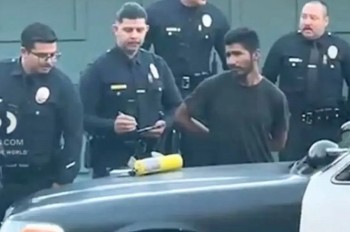 Who is the Suspected Arsonist in the LA Wildfires: A Homeless Man Who is the Suspected Arsonist in the LA Wildfires: A Homeless Man |
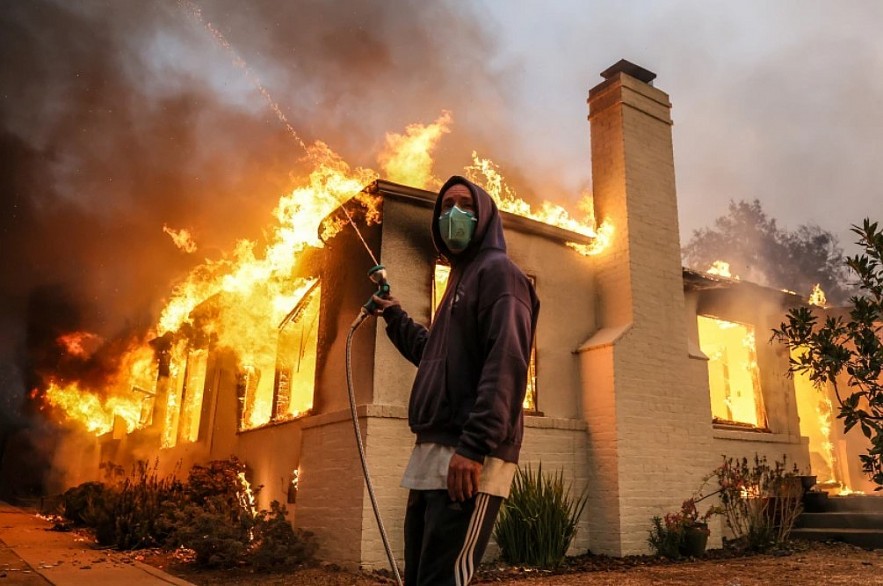 |
| What Caused California wildfires |
The devastating wildfires in California have once again made headlines, claiming lives, destroying thousands of homes, and causing untold environmental and economic damage. As of January 2025, at least ten people have lost their lives, and the fire has consumed vast swathes of land in the Los Angeles area, including upscale neighborhoods such as Pacific Palisades.
While the root causes of wildfires in the region are multifaceted, the arrest of a homeless individual for alleged arson near the Kenneth Fire has sparked widespread discussion.
Arrest and Initial Investigations
On January 9, 2025, a homeless man was arrested near the Kenneth Fire in West Hills. Witnesses reported seeing the suspect using a flamethrower-like device to ignite debris, including dry Christmas trees and garbage cans. Residents detained the man and handed him over to law enforcement. The Los Angeles Police Department (LAPD) has since opened an arson investigation.
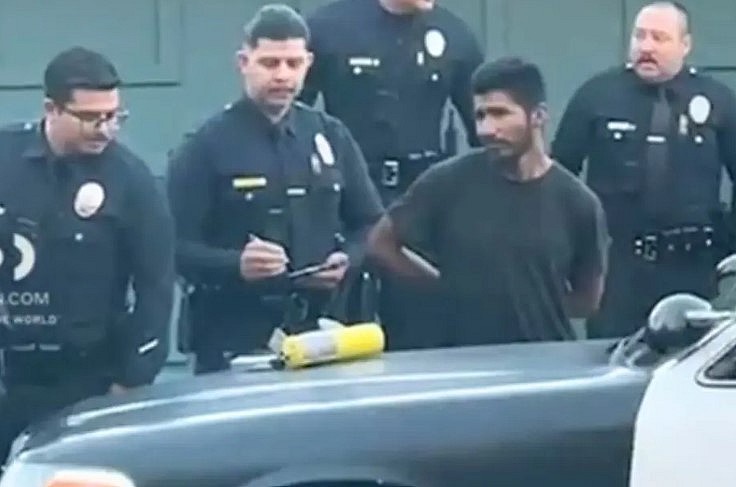 |
| A male arson suspect was arrested in Woodland Hills as the nearby Kenneth Fire ignited in the Calabasas area on Jan. 9, 2025 |
While the suspect's actions were suspicious, the LAPD has been cautious about making definitive claims. Senior Lead Officer Sean Dinse stated that the connection between the suspect and the wildfire has yet to be established. The Kenneth Fire, which has already scorched nearly 1,000 acres, is still being investigated, with no clear evidence linking the individual to the ignition of the main blaze.
Environmental Conditions: The Perfect Storm for Wildfires
California’s wildfires are driven by a combination of human activity and environmental factors. Southern California, in particular, has been experiencing prolonged drought conditions, with rainfall since October amounting to less than 10% of the seasonal average. These dry conditions have left vegetation highly flammable, creating the ideal fuel for fires.
In addition to the drought, powerful offshore winds have exacerbated the spread of flames. Wind gusts of up to 70 mph have been recorded, propelling embers over large distances and igniting new fires. The National Weather Service issued a red flag warning to over 19 million residents in the region, emphasizing that fire weather conditions were "as bad as it gets."
The Role of Climate Oscillations
Experts point to California's weather "whiplash" as a significant factor in the state's wildfire risk. According to Daniel Swain, a climate scientist at UCLA, the region's climate alternates between severe drought and heavy rainfall. While wet years encourage vegetation growth, subsequent dry years leave that vegetation parched and ready to ignite.
“It’s not just that drier conditions are perpetually more likely in a warming climate,” Swain explained, “but this oscillation between extremes is particularly consequential for wildfire risk in Southern California.”
Human Activities: A Persistent Threat
While environmental conditions create the stage for wildfires, human actions often serve as the ignition source. Investigators are exploring several potential causes for the current fires, including utility lines, accidents, and deliberate arson. Lightning, a common natural cause, was quickly ruled out for these fires.
Utility companies have historically been implicated in major wildfires. For example, the 2017 Thomas Fire—one of California's largest—was sparked by Southern California Edison power lines during high winds. However, there is no current evidence linking utility lines to the ongoing fires.
Arson is another possibility. The arrest near the Kenneth Fire highlights the role individuals, intentionally or unintentionally, can play in sparking disasters. Homeless individuals, who often reside in wildfire-prone areas and may rely on open flames for warmth or cooking, are especially vulnerable to accusations in such situations.
Where Are the Fires?Several major fires have erupted across Los Angeles County and surrounding areas, creating a devastating impact on communities and landscapes. Here's a breakdown of the fires and their current status: 1. Palisades Fire The Palisades Fire began on Tuesday morning as a brush fire in Pacific Palisades, a neighborhood east of Malibu. By Thursday evening, the fire had grown to 19,978 acres, according to the California Department of Forestry and Fire Protection (Cal Fire). Containment efforts have been challenging, with only 6% of the fire under control. 2. Eaton Fire Igniting Tuesday night in a canyon within the sprawling national forest lands north of downtown Los Angeles, the Eaton Fire expanded rapidly. By Thursday, it had consumed 13,690 acres and remained completely uncontained. Los Angeles County Fire Chief Anthony Marrone warned that the fire could threaten up to 5,000 structures. 3. Hurst Fire The Hurst Fire began as a brush fire Tuesday night in Sylmar, a suburban neighborhood north of San Fernando. Initially covering 500 acres, it grew to 771 acres by Thursday night. According to Los Angeles Fire Chief Kristen Crowley, the fire is 37% contained. 4. Lidia Fire Breaking out Wednesday afternoon near Acton, in a region between the Sierra Pelona and San Gabriel Mountains, the Lidia Fire reached 394 acres by Thursday night. With 75% of the fire contained, efforts to extinguish it have seen significant progress, according to Cal Fire. 5. Kenneth Fire The Kenneth Fire ignited Thursday evening in Woodland Hills, near Calabasas in Los Angeles. It quickly spread to cover 960 acres. Although it remained 0% contained as of Thursday night, officials reported that the fire's forward progress had been successfully halted. 6. Sunset Fire The Sunset Fire erupted in the Hollywood Hills near Runyon Canyon just before 6 p.m. Wednesday, prompting mandatory evacuations in the area. Stretching to 60 acres by Wednesday evening, the fire was fully contained by Thursday afternoon, according to the Los Angeles Fire Department. |
Expert Perspectives on Wildfire Investigations
Fire investigations begin by pinpointing the fire's origin and determining its cause. John Lentini, a fire analysis expert, noted that even massive wildfires start small. “People will focus on where the fire started, determine the origin, and look around the origin to determine the cause,” Lentini said.
Investigators are thorough in their approach, as multiple factors often contribute to ignition. Debris burning, fireworks, and accidental sparks are also being considered as potential causes. Experts emphasize that wildfires result from a complex interplay of human activity, environmental conditions, and climate patterns.
As investigations continue, it is crucial to adopt a multifaceted approach to mitigate wildfire risks. This includes addressing climate change, improving infrastructure, and providing support for at-risk communities. Only through comprehensive efforts can California hope to reduce the frequency and impact of such devastating events.
Conclusion
The catastrophic wildfires in California are a stark reminder of the region’s vulnerability to environmental and human-induced disasters. While the arrest of a homeless individual near the Kenneth Fire highlights one potential ignition source, experts caution against oversimplifying the causes. Wildfires in California are fueled by a combination of climate extremes, dry conditions, and human activities.
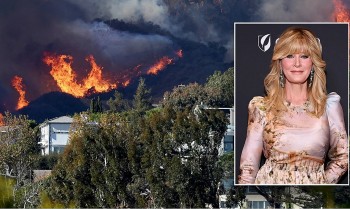 Hollywood is Being Burned by the Sunset Fire, Celebrities Lost Homes Hollywood is Being Burned by the Sunset Fire, Celebrities Lost Homes Residents of the Hollywood Hills, Hollywood Boulevard, and other areas have been ordered to evacuate as a result of the devastating wildfire that has spread ... |
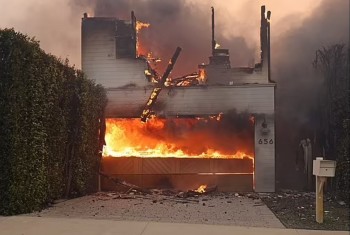 Full List of Stars Who Lost Homes in the LA Wildfires Full List of Stars Who Lost Homes in the LA Wildfires More than 1,000 million-dollar homes, primarily in the affluent Pacific Palisades neighborhood, have been destroyed by the devastating wildfire in Los Angeles. The complete list ... |
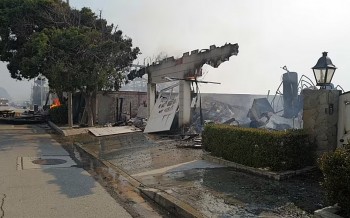 Who was David Geffen? Owner of $85 Million Malibu Mansion Burns Down in Palisades Fire Who was David Geffen? Owner of $85 Million Malibu Mansion Burns Down in Palisades Fire The Palisades Fire has destroyed numerous beachfront homes in Malibu, including the iconic mansion once owned by music mogul David Geffen. |


























